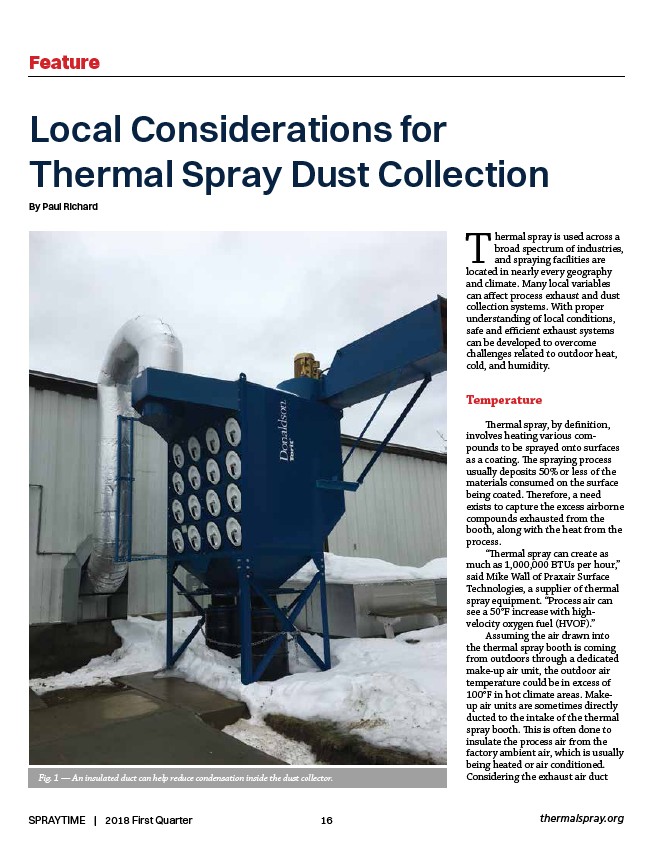
Local Considerations for
Thermal Spray Dust Collection
By Paul Richard
Fig. 1 — An insulated duct can help reduce condensation inside the dust collector. Considering the exhaust air duct
16
Feature
Thermal spray is used across a
broad spectrum of industries,
and spraying facilities are
located in nearly every geography
and climate. Many local variables
can affect process exhaust and dust
collection systems. With proper
understanding of local conditions,
safe and efficient exhaust systems
can be developed to overcome
challenges related to outdoor heat,
cold, and humidity.
Temperature
Thermal spray, by definition,
involves heating various compounds
to be sprayed onto surfaces
as a coating. The spraying process
usually deposits 50% or less of the
materials consumed on the surface
being coated. Therefore, a need
exists to capture the excess airborne
compounds exhausted from the
booth, along with the heat from the
process.
“Thermal spray can create as
much as 1,000,000 BTUs per hour,”
said Mike Wall of Praxair Surface
Technologies, a supplier of thermal
spray equipment. “Process air can
see a 50°F increase with highvelocity
oxygen fuel (HVOF).”
Assuming the air drawn into
the thermal spray booth is coming
from outdoors through a dedicated
make-up air unit, the outdoor air
temperature could be in excess of
100°F in hot climate areas. Makeup
air units are sometimes directly
ducted to the intake of the thermal
spray booth. This is often done to
insulate the process air from the
factory ambient air, which is usually
being heated or air conditioned.
SPRAYTIME | 2018 First Quarter thermalspray.org